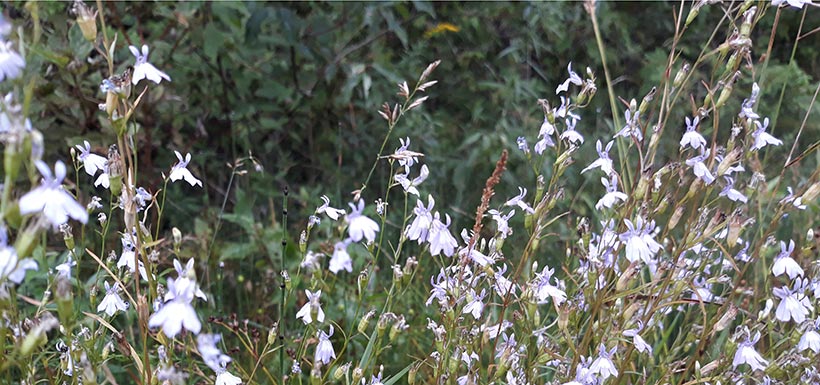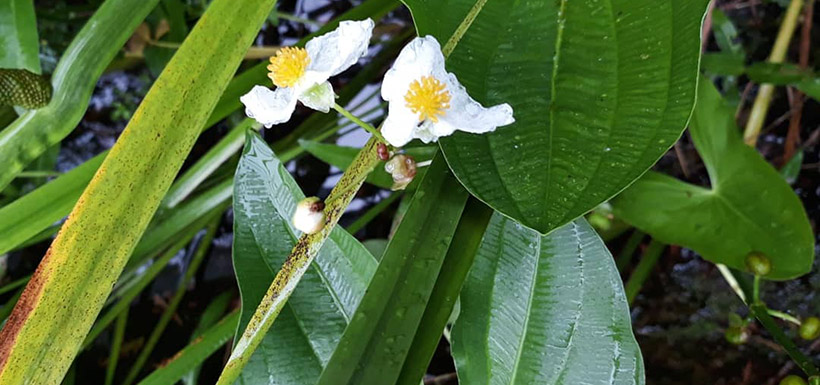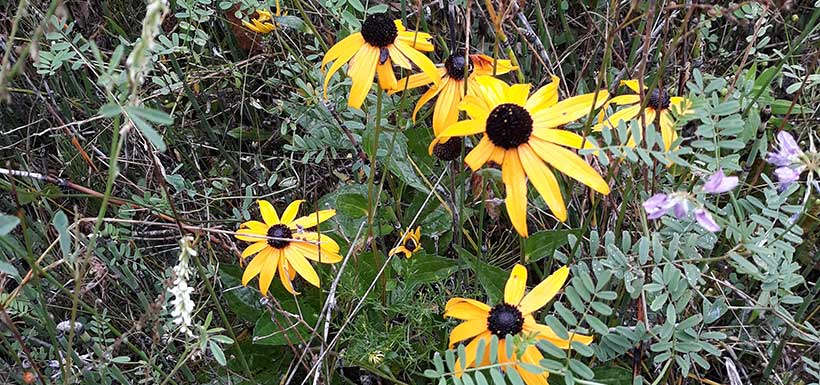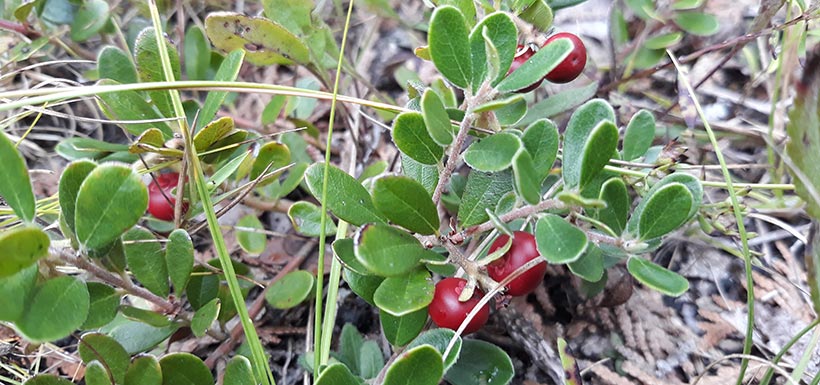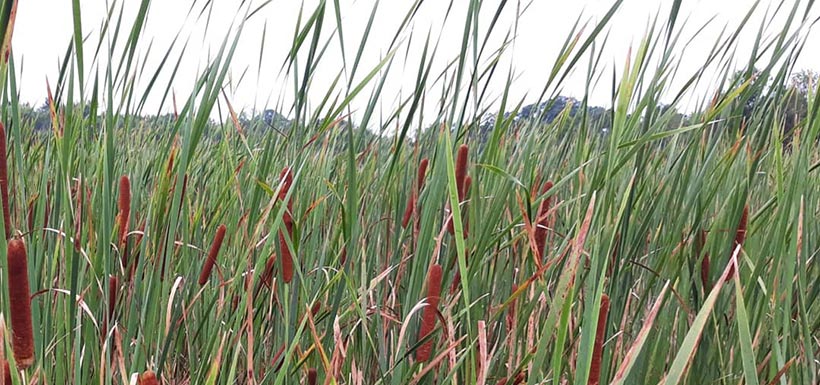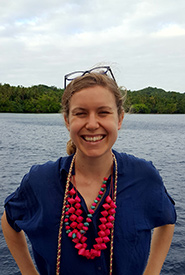Botanizing by Lake Ontario: An Australian visits the Nature Conservancy of Canada
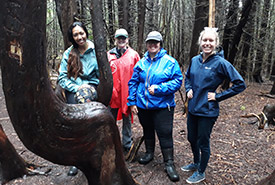
Left to right: Cheryl Reyes, Jane Gilbert, Amanda Tracey and Kate Cranney at Presqu'ile Provincial Park (Photo by NCC)
We looked suspect at best. Picture this: three cars parked in an isolated part of Presqu’ile Provincial Park. Ten people huddled together against the wind and rain. One woman picking something from the ground, holding it up to the light. Everyone murmuring excitedly as she furiously flicks through a thick book.
To an outsider, I’m sure we looked like a strange lot. A kind of outdoor cult, perhaps? A group of adults late to the Pokémon GO party? No, we were a group of botany-loving buffs, gathered together to learn more about the plants of Presqu’ile Provincial Park, on the shores of Lake Ontario.
I had travelled all the way from Australia to Canada, to do a fellowship on communications in the conservation sector. Over three months, I met with environmental non-profits all across Europe, the U.S. and Canada. In Toronto, Jane Gilbert from the Nature Conservancy of Canada (NCC) kindly offered to show me one of the organization’s conservation sites while telling me about NCC’s work.
So, on a chilly morning in August, we met with NCC staff and members of the Kingston Field Naturalists to explore Presqu’ile Provincial Park. We were all thrashed by wind and rain while learning about the park's plants. The field trip was led by Anne Roberston, who runs the Kingston Field Naturalist’s Youth Program. I wasn’t surprised to find out that Anne was once a biology teacher; she is a brilliant science communicator and an enthusiastic teacher.
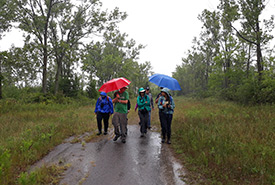
Botanizing while walking toward the lake (Photo by NCC)
We botanized while walking toward the lake. As Anne said, “The plants here, at Presqu’ile, are quite spectacular. Most people come here for the birds, for the duck migration and other species passing through, but the plants are beautiful.” I studied botany in Australia, and had to agree — the plants were beautiful and delicate.
Local naturalist David Bree explained that the site was a golf course in the 1920s, but is now home to many plants, some considered rare or threatened. We saw orchids, including lady tresses and nodding tresses, obedient plant and bearberry. As we stopped by an open patch of land, David told us that there are eight special habitats here, including "pannes" — open, flat, sandy and wet areas — a habitat now seldom found in Ontario.
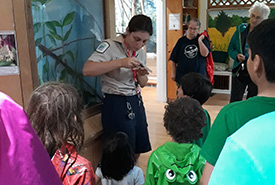
Presqu'ile Provincial Park Nature Centre's Isabella showing children how to tag a monarch butterfly (Photo by Kate Cranney)
The rain began to hammer down and we retreated to our cars, driving on to Presqu'ile Provincial Park's Nature Centre. Here, the Nature Centre’s Isabella showed our group and some very excited kids how to tag a monarch butterfly. Scientists across Canada and the U.S. have used for decades small stickers to track where monarchs migrate, to understand the species’ life cycle.
Isabella delicately attached a tiny sticker with a unique number to the wings of two female butterflies. As she filled out the data sheet, she asked the kids to help her name the tagged butterflies. Nina and Sarah were deemed highly appropriate names.
From there we visited the park’s Lighthouse Interpretive Centre. Here, Amanda Tracey and Cheryl Reyes from NCC told us the story of the organization’s newest nature reserve — the nearby Brighton Wetland. It’s the last piece of undeveloped land on the eastern shoreline of Presqu’ile Bay and an important stopover place for migratory birds.
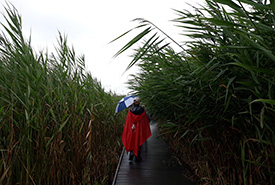
Walking the Marsh Boardwalk Trail (Photo by Kate Cranney)
Amazingly, the land was bought by NCC and its partners in two months! As Amanda said, it goes to show how important it is for people that the land remain undeveloped, for it to be protected. I could see Amanda and Cheryl’s excitement about the Brighton Wetland — it is truly a community collaboration. NCC is working with groups like the Kingston Naturalists to understand the special species that call the Brighton Wetland home. As Amanda said, “No one knows everything; you share what you know.”
We finished the day by walking the Marsh Boardwalk Trail, and seeing the wetlands and famous “horse trees” (the sway-backed trunks of eastern white cedars). A hearty thank you to Jane, Anne, Amanda and Cheryl for a great day out. For an Australian unaccustomed to large lakes and temperate plants, I had a fabulous time!

